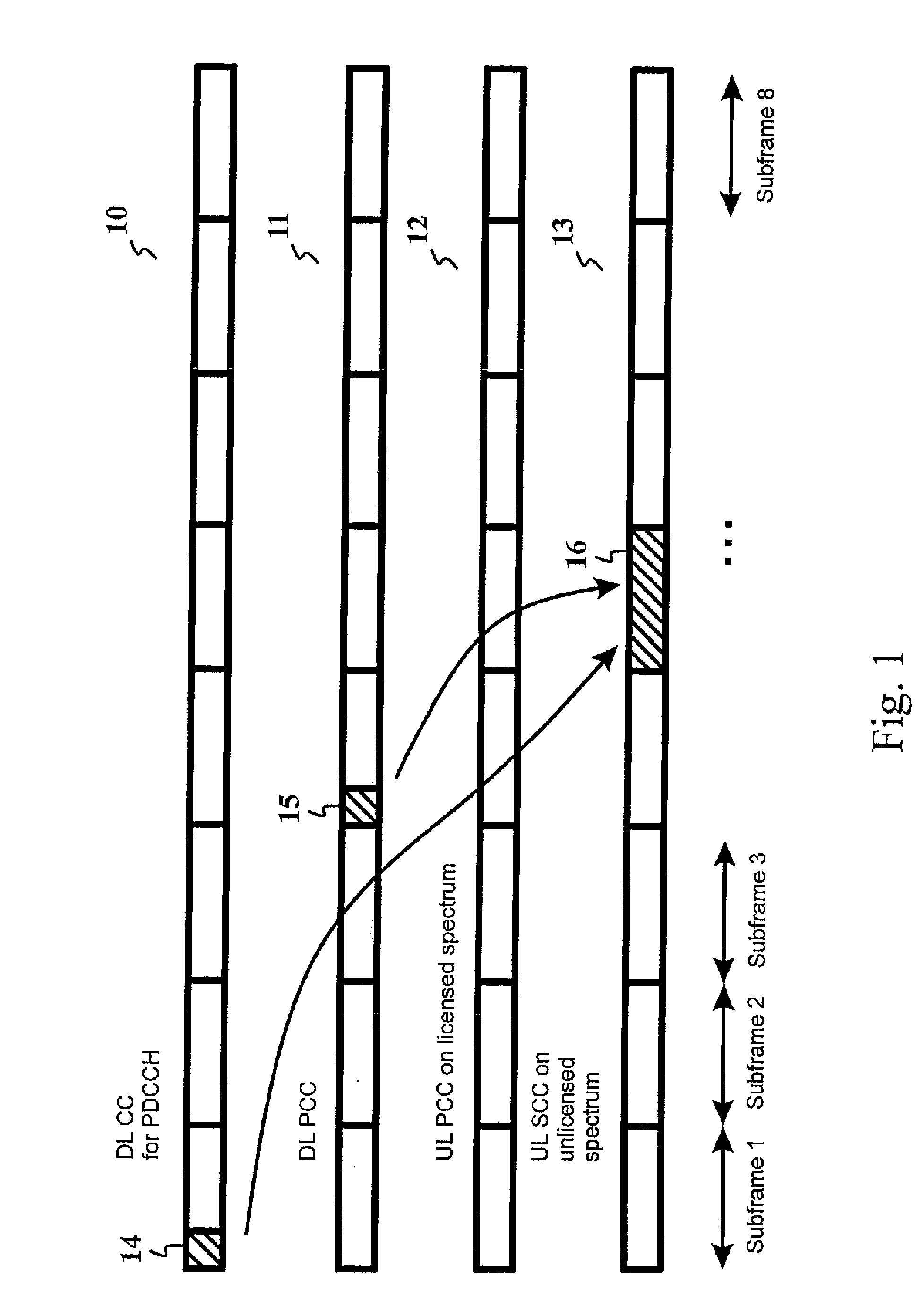Signaling Method To Enable Controlled TX Deferring In Mixed License and Unlicensed Spectrum In Carrier Aggregation In Future LTE-A Networks
a technology of carrier aggregation and signal deferral, which is applied in the field of mobile communication networks, can solve the problems of corrupted packets needing to be retransmitted, multi-antenna techniques cannot continuously increase the transmission rate, and non-continuous ca giving more practical approaches
- Summary
- Abstract
- Description
- Claims
- Application Information
AI Technical Summary
Benefits of technology
Problems solved by technology
Method used
Image
Examples
Embodiment Construction
[0053]Reference will now be made in detail to the embodiments of the present invention, examples of which are illustrated in the accompanying drawings.
[0054]The present invention introduces a method, an apparatus and a computer program for deferring transmission of signals in a network which applies carrier aggregation.
[0055]In general, frequency bands available for the communication between a terminal and a base station are either licensed specifically for given use or service provider (such as for 4G mobile communication use) or the bands are unlicensed. Unlicensed bands (or license-free spectrum as it is sometimes called) means a frequency band that has rules pre-defined for both the hardware and deployment methods of the radio in such a manner that interference is mitigated by the technical rules defined for the bands, rather than the band being restricted for use by only one entity through a spectrum licensing approach.
[0056]In the following, it is assumed that a base station (...
PUM
 Login to View More
Login to View More Abstract
Description
Claims
Application Information
 Login to View More
Login to View More - R&D
- Intellectual Property
- Life Sciences
- Materials
- Tech Scout
- Unparalleled Data Quality
- Higher Quality Content
- 60% Fewer Hallucinations
Browse by: Latest US Patents, China's latest patents, Technical Efficacy Thesaurus, Application Domain, Technology Topic, Popular Technical Reports.
© 2025 PatSnap. All rights reserved.Legal|Privacy policy|Modern Slavery Act Transparency Statement|Sitemap|About US| Contact US: help@patsnap.com



